“Better For Your” coffee mug: 304 Stainless Steel (Non-detect for Lead, Cadmium, Arsenic, Mercury & Antimony)
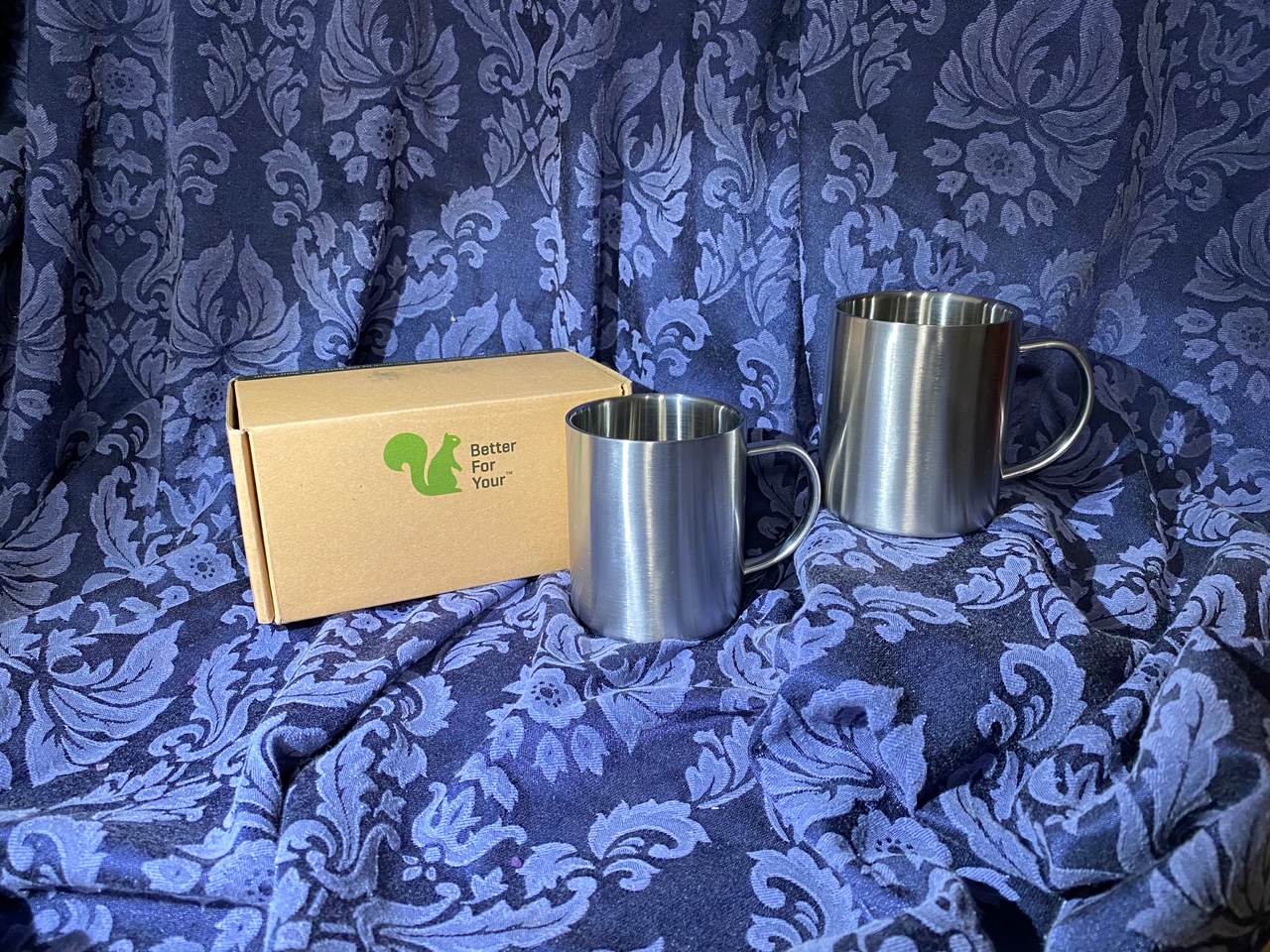
 Posted: Saturday, March 14, 2020
Posted: Saturday, March 14, 2020
Introduction: Tamara Rubin is an independent advocate for consumer goods safety, and she is also a mother of Lead-poisoned children. She began testing consumer goods for toxicants in 2009 and was the parent-advocate responsible for finding Lead in the popular fidget spinner toys in 2017. She uses high-precision XRF testing (a scientific method used by the Consumer Product Safety Commission) to test consumer goods for contaminants including Lead, Cadmium, Mercury and Arsenic. [bio link]
“Better For Your” stainless steel coffee mugs:
While this mug is free of the five main toxicants that I look for in the testing that I do (Lead, Mercury, Cadmium, Arsenic, and Antimony), I am not 100% comfortable with the use of stainless steel for a coffee mug – especially drinking coffee from a stainless mug that one might expect would be used every day by the same individual…
Have you ever consumed water from a stainless water bottle after the water has been sitting in the bottle for 24 hours? Have you noticed the “metallic” smell and taste imparted to the water in that situation? In our family, when we send our kids to school with stainless water bottles (which we do, almost every day), we always fully rinse out the water bottle in the morning, and fill it with fresh filtered water (to make sure there is no metallic taste or smell) before sending them off to school .
At this point, I fully support the use of stainless steel for most things — water bottles, plates, utensils, cutlery and pots and pans, etc. — but with hot coffee (which is usually consumed daily — and often from the same cup each day) – given the smell and taste imparted to water that has been sitting in stainless steel for just 24 hours (suggesting possible leaching of metals) – I would have concerns for the heat and the acid of the coffee combining to potentially leach Chromium or Nickel (or Iron for that matter) from the stainless steel into the beverage over time. I would be fine using these mugs for water or milk — or most other cold beverages that one might drink quickly — just not for hot coffee or tea. I prefer to drink my coffee out of Lead-free clear glass mugs.
I don’t have any science to back up this concern, and I have used insulated stainless thermos-type containers (or travel mugs) to drink coffee from in the past – but I have just stopped doing that in the past year or so, out of an abundance of caution. I also don’t know if stainless steel vessels are leach-tested (at the time of manufacture) for the potential leaching of Nickel, Chromium and Iron – I will look in to that.
FYI: Here’s a good discussion I found about 18/8 304 Stainless
The full XRF test results of the stainless mug pictured are below (so please scroll down). Here are links to some additional reading that may be of interest based on your interest in the test results of this item:
- Click here to see more mugs I have tested.
- Click here to read more about stainless steel.
- Click here to see more stainless steel items I have tested.
New Here?
For those new to my website, please check out the menu in the header of the website for more information about how I test things (and my background, etc.) On each post you can also click on any of the keyword tabs at the top of the post to find more items in that category. Here’s the post discussing the type of testing I do, and the specific instrument I use to detect, analyze and confirm metals content, and ultimately produce the resultant data for each item reported here – link.
Please Note: Test results reported below are science-based, accurate, and replicable. Test results reported here are from tests that were done for a minimum of 60 seconds each, and repeated multiple times, to confirm the results. As with all the testing reported here on my blog, a freshly-calibrated high-precision XRF instrument testing in Consumer Goods mode was used to test the item pictured here.
As always, please let me know if you have any questions.
Thank you for reading and for sharing my posts!
Tamara Rubin
#LeadSafeMama
Test results for the stainless steel mug pictured on this post:
Stainless Steel Mug – outside of mug:
- Nickel (Ni): 82,300 +/- 2,500 ppm
- Iron (Fe): 751,000 +/- 3,700 ppm
- Chromium (Cr): 152,700 +/- 1,800
- Vanadium (V): 1,157 +/- 309 ppm
- Manganese (Mn): 9,545 +/- 1,860 ppm
Stainless Steel Mug – bottom / logo area:
- Nickel (Ni): 82,400 +/- 1,300 ppm
- Iron (Fe): 753,400 +/- 2,000 ppm
- Chromium (Cr): 150,600 +/- 1,300
- Vanadium (V): 1,386 +/- 304 ppm
- Cobalt (Co): 2,229 +/- 1,151 ppm
- Manganese (Mn): 9,533 +/- 955 ppm
~ End of Post ~
Scroll down for additional photos of this item.
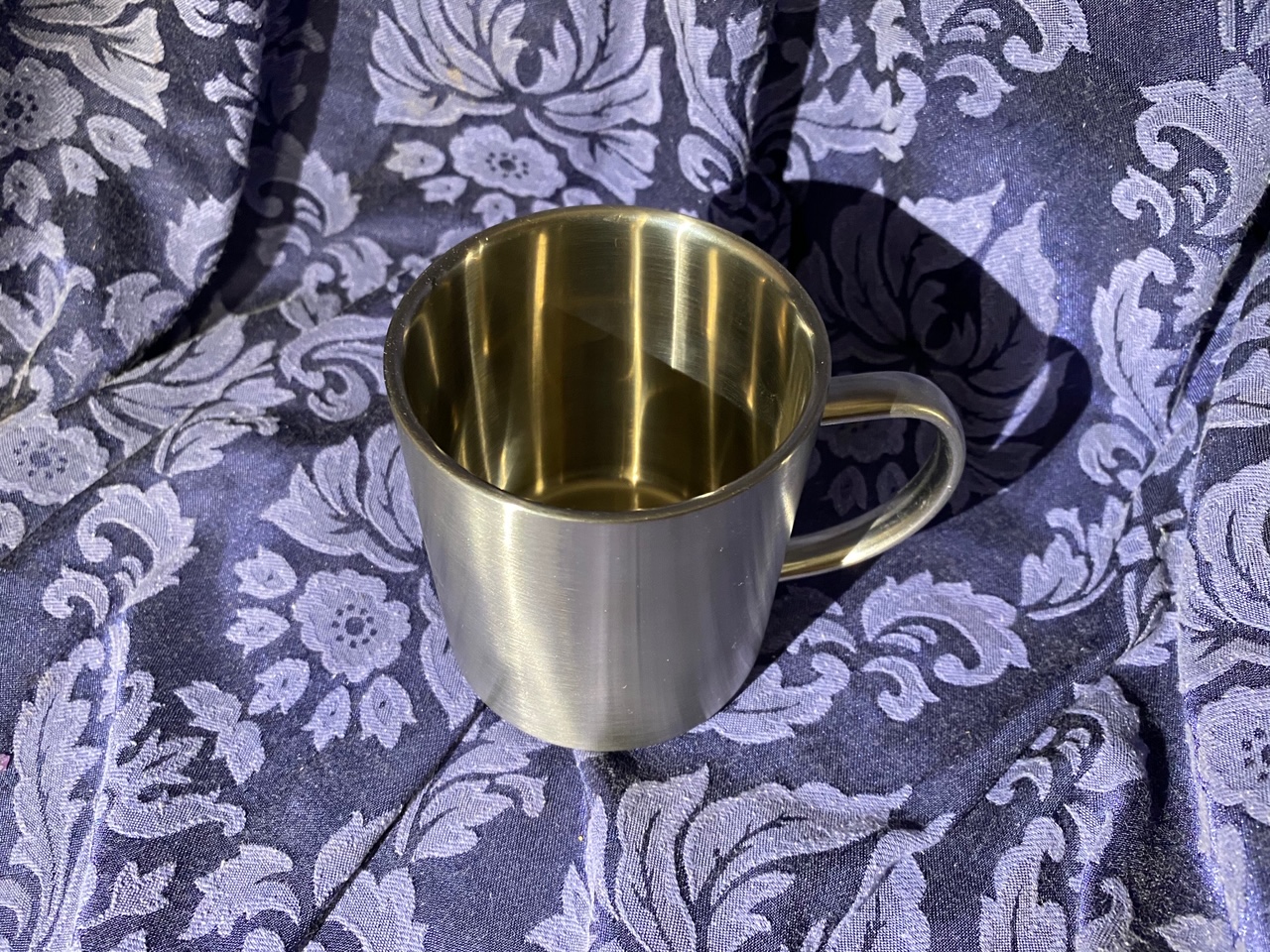
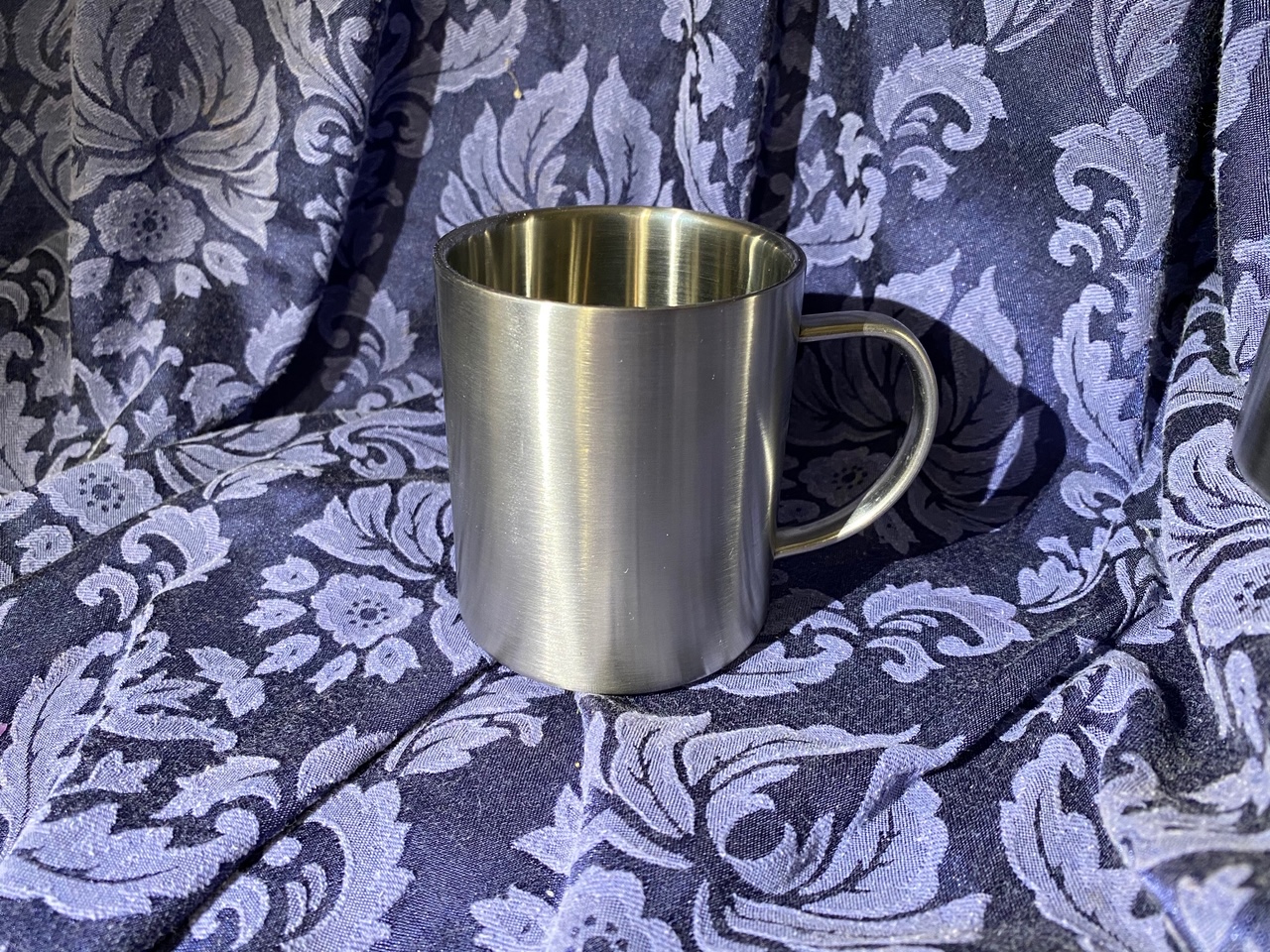
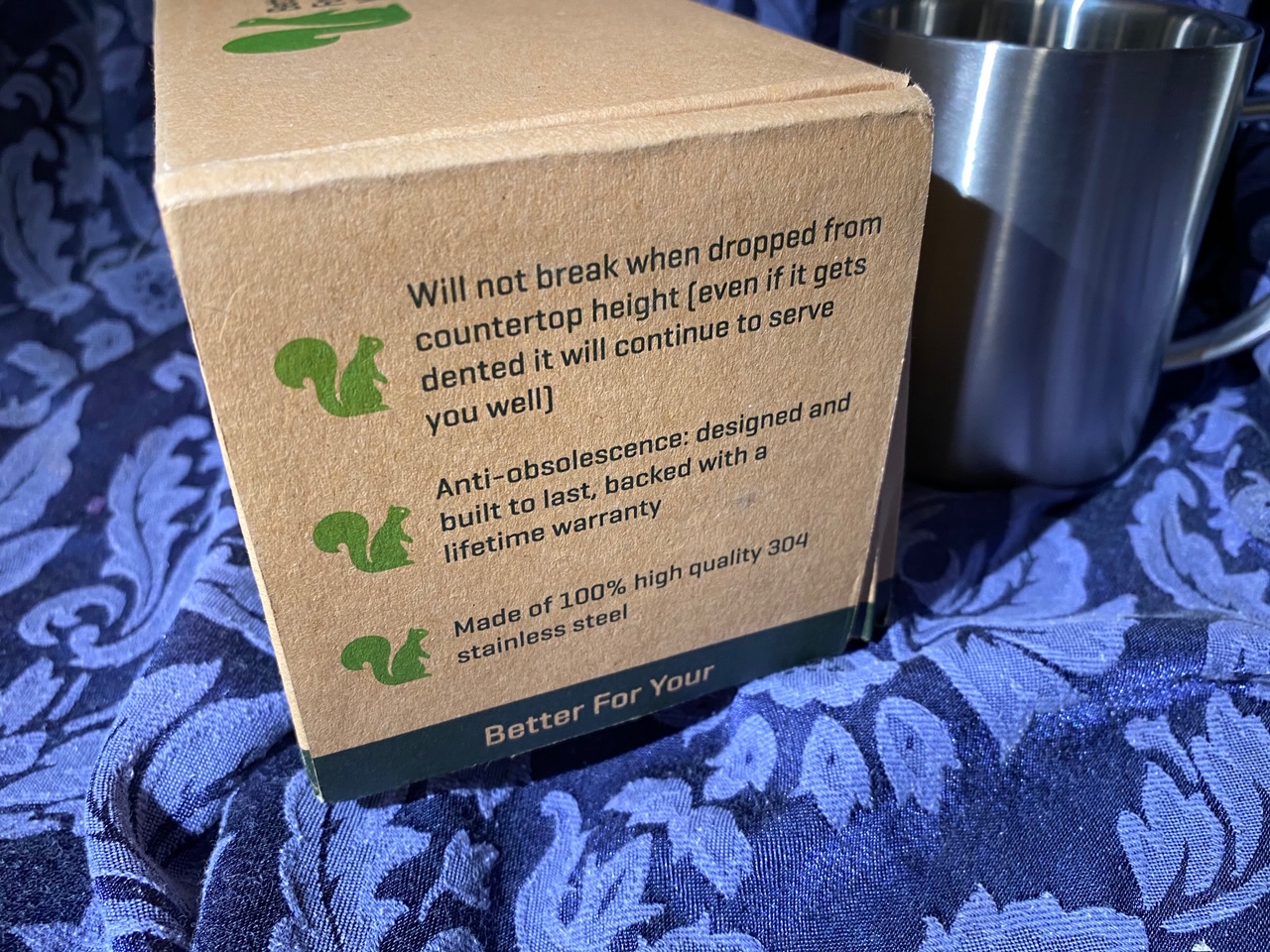
Never Miss an Important Article Again!
Join our Email List


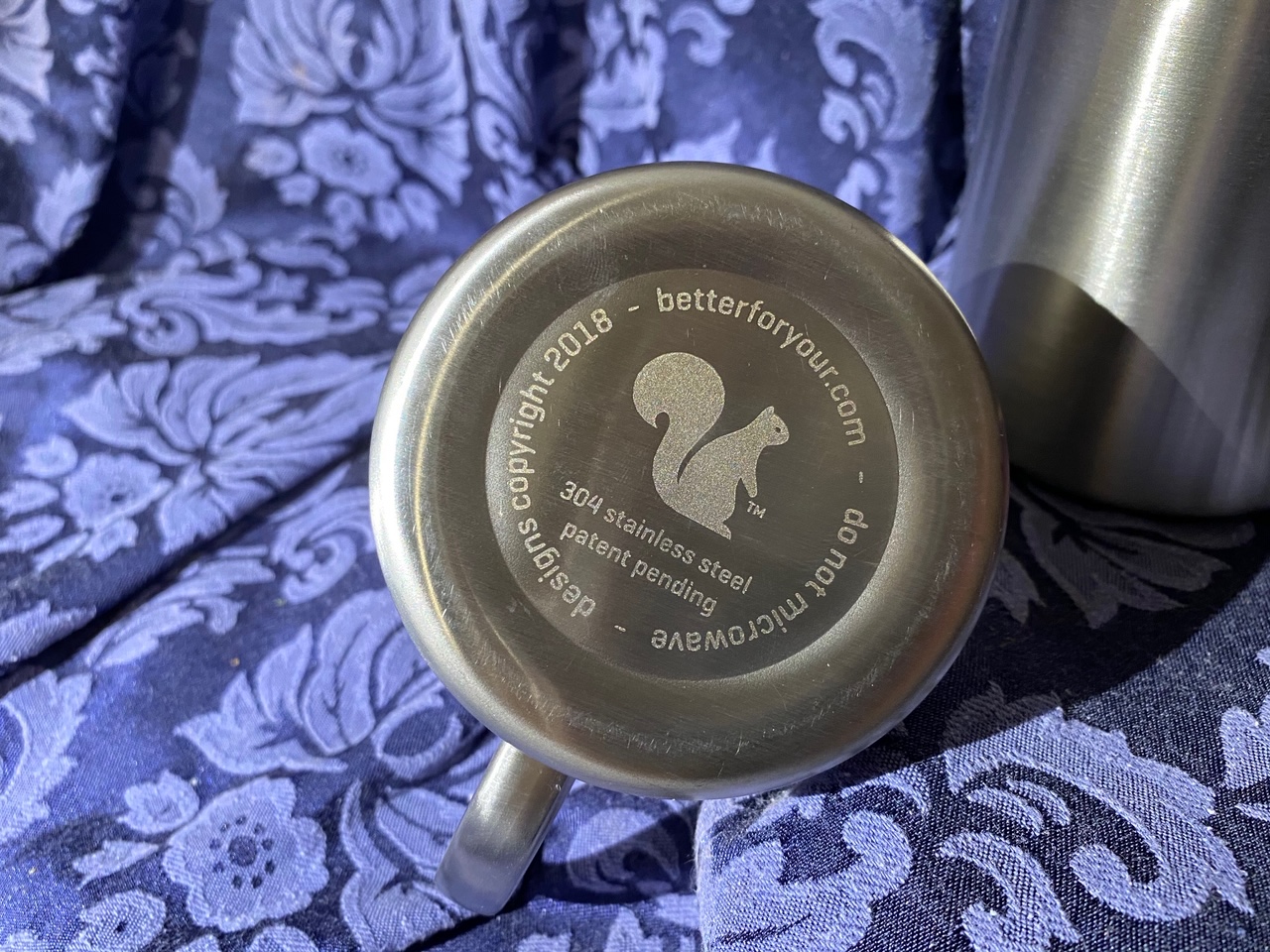 Posted: Saturday, March 14, 2020
Posted: Saturday, March 14, 2020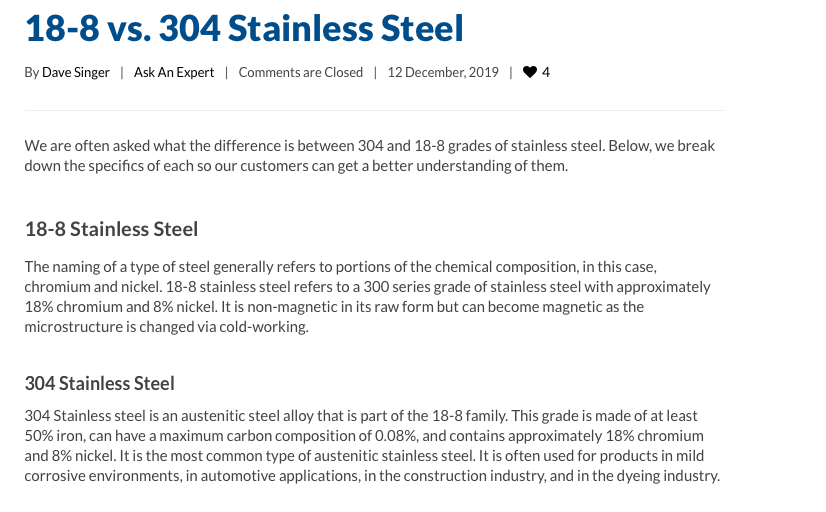
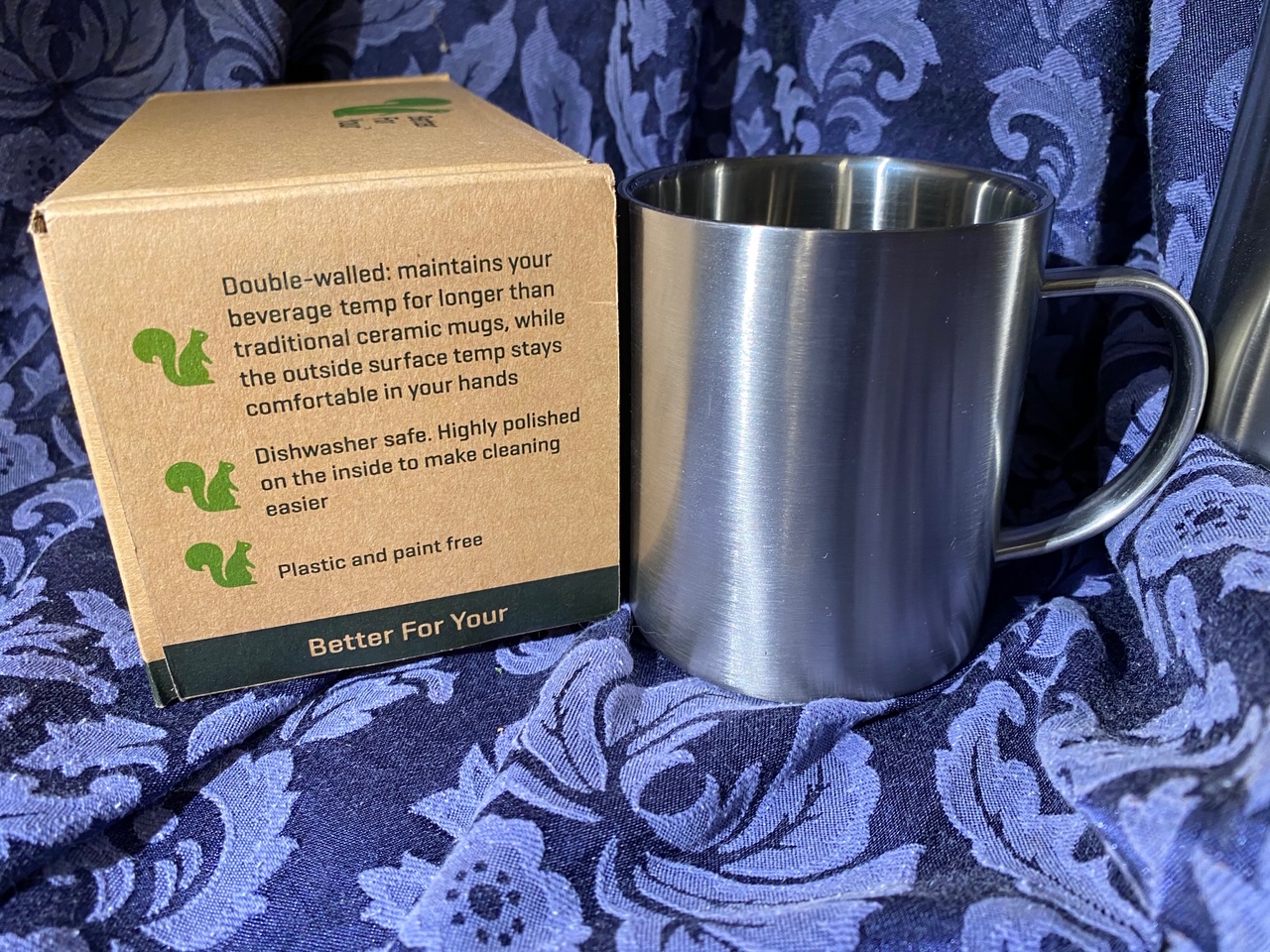

LOVE THAt it has squirrel on it too! Thanks for sharing!
Dear Tamara,
I love this write-up on stainless steel. I have a question, in case you have an educated guess. I bought Cusinart tri-ply from your affiliate link. Aluminum encapsulated between layers of stainless steel. After using on high heat, one of the pans started “pitting”. Which I read is a sort of corrosion. Does that mean, now the food will come in contact with aluminum, or Chromium/nickel might leach? The warranty considers it to be a cosmetic issue and it is a very expensive pan!
Thanks in advance 🙂
I have this question as well. Thanks for asking!
thank you
304 stainless steel has extremely high levels of Nickel which can leach into your drinks. Nickel is extremely toxic, carcinogenic and one of the most common allergens there is. I bought a stainless steel tumbler thinking I was doing something good for my health and shortly after started breaking out in eczema patches in my elbow and back of my hand. It took me years to put it together that my coffee was acidic and probably leaching Nickel into my coffee.
I stopped drinking out of my tumbler and my eczema went away.
Thank you, Melissa, for your story — of negative health effects after years of using and — of positive health effects after stopping use — of your stainless steel tumbler (of “304 stainless steel,” part of the “18-8 stainless steel” family, as Tamara Rubin’s information on this page indicates”).
And thanks for the reminder that nickel is carcinogenic and commonly allergenic.
Many people, like you and I, in our purchasing and use decisions, are about as careful as we can be and try to limit ourselves to useful products that are healthy for people (including ourselves, children, the workers, etc.), and our planet. Often with limited means.
It is such a challenge.
I recently received a coffee / tea traveler from a Certified B Corp, “MiiR,” based in Seattle. https://www.miir.com/products/travel-tumbler-360-lid-stainless-steel-vacuum-insulated (I have no vested interest in this company or in referring to it.)
[B Corps “are leaders in the global movement for an inclusive, equitable, and regenerative economy […] unique in our ability to measure a company’s entire social and environmental impact.” https://www.bcorporation.net/en-us/certification (I have no vested interest in this certification body or in referring to it.]
The company describes a feature of its coffee drinkware items like the one I received this way: “18/8 Medical grade stainless steel doesn’t transfer flavor & no metal aftertaste.” https://www.miir.com/products/flip-traveler
Other respectable, good companies around the world, placing their own logos on the drinkware, also sell this company’s drinkware and coffee ware.
A person can seek to do right for the health of people and planet, feeling they’re doing their due diligence, and nevertheless be left in large doubt as to what heavy metals, other serious toxins, and related harms they are being exposed —- or are exposing children or other people, such as those to whom they are giving a gift.
I appreciate Tamara Rubin’s sharing above of her candid perspectives on drinking hot liquids from stainless steel coffee containers, a position based perhaps not on any definitive science per se being in yet, but on observations like metal flavored water, best guesses, and the precautionary principle.
As a result, I have not used my new coffee / tea traveler … or any other.
I appreciate Tamara Rubin’s testing and research, and her publicizing her findings. And at the same time I wish there were affordable ways for all kinds of people to know the safety of — or lurking danger in — the products they have or are considering purchasing — whether for themselves, children, people to whom they would like to give a gift, or other people. Thank you, Ms. Rubin.
In the best of all world’s, maybe one of Tamara Rubin’s websites could include one area for voting for items that readers would most like to see tested, where for $1 per vote a reader could “either request or support with a vote” that such and such item (for which the original request placer would need to include the full spec’s) be tested, and the findings be publicized to a separate area of the website where it is indexed, so it can be found easily.
So, Tamara might see that a request has been made for and perhaps votes have accumulated for . . . a certain item (ie. a stainless steel tea / coffee traveller, or a particular “moka pot” for making coffee Italian style (including it’s brass, pressure-releasing, screw area), OR a particular manual espresso machine (popular Flair brand refuses to provide information on lead content), OR a particular model of slow cooker, OR a particular brand or set of pots, OR a particular brand of “dutch ovens,” OR a toy, OR a pesticide (OR maybe even a particular ingredient list of a vaccine or other drug that people don’t expect to expose a person to heavy metal harms?), etc..
Ms. Rubin’s choice — she could clearly preface the request/vote purchasing area of the web page with a list that identifies the categories of items that are not being considered for testing at this time.
Based on the $1 requests and $1 votes, Tamara Rubin’s curiosity, interest, and opportunity might intersect for one item or another. But the tiny $1 contributions in the meanwhile could help fund her public interest efforts. And fewer corporations would be able to get away with as much otherwise untouchable, health damaging behavior. : )
Thank you for your thoughtful comment!
T
Hi Tamara!
Is it safe to boil water in stainless steel pots?
As a reader I’m just going to jump in:
What else would you use ?
My thought is: Water is pretty neutral acid/alkaline wise, and the time the water is in the pot is perhaps 20 minutes. I don’t see a high risk.
Frankly I can’t think of another choice.
Decades ago, I threw out all my aluminum pots and went with SS.
Would love to know also
Usually, people can link their eczema to dairy foods. I’m curious if you were adding a dairy creamer or milk to the coffee and if you are, or were, consuming other dairy products in your diet. Let’s say that your only dairy food was a creamer added to the coffee, and then you stopped drinking the coffee. Then, the disappearance of eczema could also be explained by eliminating dairy.
Iron and Chromium are essential minerals your body needs, thats why Stainless Steel is a great choice (just like cast iron pans in cooking). Nickel, like Copper and cobalt – helps the body absorb B12, is also used by the body, but to the above commenter’s point, both are toxic in too high of amounts. The nickel in stainless is a super small percentage, but for those with sensitivities, you can find nickel free stainless steel cookware (haven’t seen it in drinking vessels yet). I see all the tests were done in the outside of the mug would be curious of the inside. Manganese and Vandium are also essential minerals not sure why they are used here, but leaching from this product would actually be a positive.
Appreciate the author’s work. But not all metals are bad.
More info here: https://tamararubin.com/2022/08/why-do-some-stainless-steel-cookware-items-have-a-prop-65-warning-isnt-stainless-steel-non-toxic/
Note: no one said “all metals are bad”